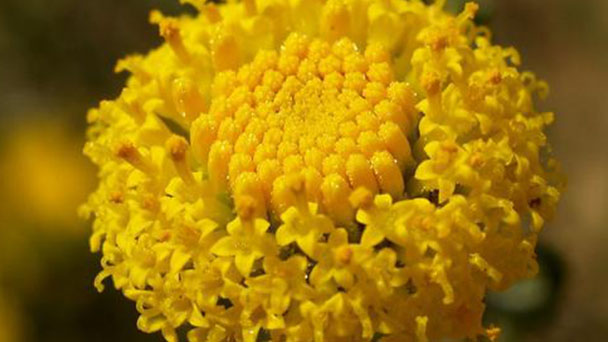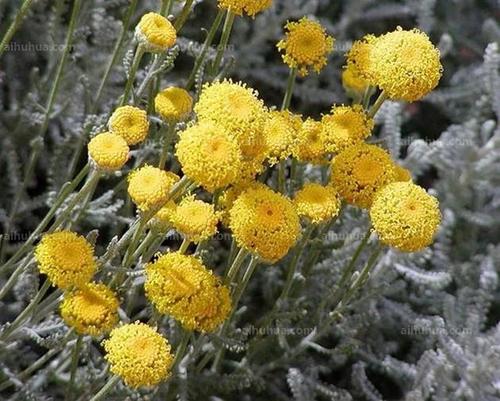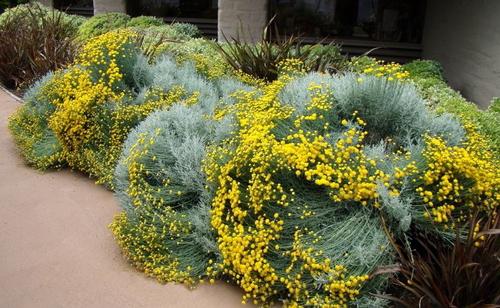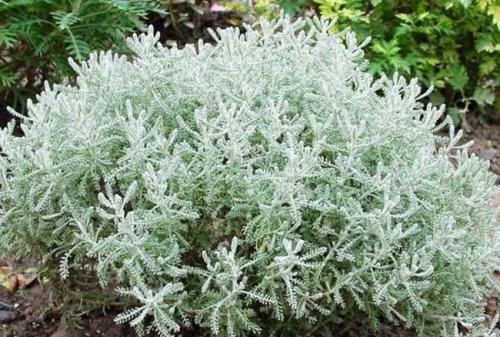Lavender cotton (Santolina chamaecyparissus) profile
Written by Maggie
Mar 16 2021

Lavender cotton (Santolina chamaecyparissus) is an evergreen perennial herb. Lavender cotton is 50 cm high, with dense branches and leaves. The new shoots are soft, with grayish-white pubescent hairs, silver gray leaves and yellow flowers. Lavender cotton is light - loving, heat - resistant, avoid wet soil waterlogging. Leaves are pale green in shaded and moist environments.
Lavender cotton picture

Morphological characteristics of lavender cotton
Branch
Lavender cotton is an evergreen perennial herb. The plant height is 50 cm, the branches and leaves are dense, the new shoots are soft, and the hairs are gray and white.
Leaf
Silver grey leaves and yellow flowers from Lavender Cotton. Lavender cotton leaves are bright, heat resistant, and avoid wet soil waterlogging. Leaves are pale green in shaded and moist environments.
Flowers
The flowers of Lavender cotton are yellow. The flowers of Lavender Cotton are resistant to drought, barren, high temperature, and pruning. They are fragrant, and their distinctive leaf color can also bring a feeling of coolness to the hot summer. Lavender cotton is light - loving, in Shanghai can open winter, heat - resistant, and avoids wet soil waterlogging.
Ecological habits of lavender cotton
Lavender cotton likes light, heat resistant, and avoids wet and waterlogged soil.
Lavender cotton leaves light green in shaded and moist environments.
Cultivation of lavender cotton
Lavender cotton is grown in full sun, poor to medium fertility, well drained soils, and is resistant to drought, salinity, and coastal environments. Set plant row spacing of 20×20cm, no need to water and fertilize after survival, but should pay attention to drainage work, if the seedlings are taller, should pay attention to pruning.In spring, when the bud is cut to the base, a month later it will form a good crown.If not pruned, lodging can occur in the summer due to overgrowth.
The distribution region of lavender cotton
Lavender cotton is cultivated in Shanghai and Hangzhou.
More varieties of lavender cotton
Gray santolina Santolina chaemacyparissus
Santolina chaemacyparissus, additionally recognized as lavender cotton, is named for its soft, silvery-gray foliage that types a mound up to two ft tall and three ft wide. The plant can be sheared to hold it extra compact. It bears buttonlike yellow blooms in early summer. These can be sheared returned after bloom to preserve the plant tidy. Zones 6-11
Green santolina
This range is additionally known as inexperienced lavender cotton and previously was once labeled as Santolina virens. The plant has fine-texture, aromatic medium-green foliage. In spring it bears buttonlike yellow flowers. It is a appropriate preference for rock gardens and natural knot gardens. Avoid overwatering it to forestall the stems from flopping open in midsummer. Zones 7-9.

Lavender cotton companion plants
Purple coneflower
Purple coneflower is so effortless to develop and alluring and attracts so many birds and butterflies that you actually should develop it, if you have the room. Valued for its massive sturdy daisy like plants with losing petals, this prairie native will unfold without difficulty in proper soil and full sun. It is troubled by means of few pests or diseases. It's a amazing reduce flower—bring in armloads of it to brighten the house. And birds and butterflies love it. Allow it to unfold so that you have at least a small stand of it. Let the plants go to seed and the goldfinches will love you, coming to feast on the seeds daily. Butterflies and useful bees additionally love red coneflower. It used to be that rosy red or white have been the solely selections in flower color. Recent hybrids have added yellow, orange, burgundy, cream, and colors in between.
Blanket flowers
Blanket vegetation is splendidly cheerful, long-blooming plant life for hot, sunny gardens. They produce single or double daisy plants thru most of the summer time and properly into fall. The mild brick purple ray flora are tipped with yellow -- the hues of Mexican blankets. Blanket plant life tolerates mild frost and is seldom eaten with the aid of deer. Deadhead the plant life to hold them blooming constantly via the summer season and into fall. Some species have a tendency to be short-lived, in particular if the soil is now not well-drained.
Sedums plants
Sedums are almost the ideal plants. They appear desirable from the second they emerge from the soil in spring and proceed to appear clean and terrific all developing season long. Many are beautiful even in wintry weather when their foliage dies and is left standing. They're additionally drought-tolerant and want very little if any care. They're favorites of butterflies and beneficial bees. The tall sorts are extraordinary for reducing and drying. Does it get higher than that? Only in the reality that there are many special kinds of this outstanding plant, from tall sorts that will pinnacle two ft to low-growing groundcovers that structure mats. All thrive in full solar with excellent drainage. Ground cowl kinds do a top job of suppressing weeds, however seldom tolerate foot traffic. Some of the smaller ones are fine grown in pots or dealt with as houseplants.
Garden use of lavender cotton
Lavender cotton is a popular flower border material in recent years. It is widely used in flower borders, rock gardens, flower beds and low hedges in Hangzhou and Shanghai. Lavender cotton can also be planted on the edge of the altar. In the Shanghai area, it is suitable to adopt block and strip cultivation, and is not suitable for sheet planting.

Latest Updated
- Benefits of Bugleweed - 7 Science-backed Health Benefits
- Bugleweed Dangers & Side Effects - Is It Poisonous?
- How to Plant Evergreen Trees - What You Should Know
- When to Plant Evergreens - Grow Guide for Evergreen Trees
- 12 Wonderful Evergreen Shrubs for Your Garden
- 12 Popular Evergreen Plants with Pictures for Beginners
- When And How To Prune A Lilac Bush Like a Pro
- How to Grow & Care for Lilac Vine (Hardenbergia Violacea)
- Japanese Lilac Tree (Syringa Reticulata) Care & Propagation Guide
- Shumard Oak Pros and Cons - What to Know
Popular Articles
- Winter maintenance of Antirrhinum Majus
- How to Grow Terminalia Mantaly Tree
- How to Grow and Care for Crossostephium Chinense
- How to grow Antirrhinum Majus in spring
- Peristeria Elata (Dove Orchid) Profile: Info & Care Guide
- Underwatered Snake Plant (Sansevieria Trifasciata) - Signs And How To Fix
- How to Care for Brazilian Jasmine Plant (Mandevilla Sanderi)
- How to Grow & Care for Graptopetalum Purple Delight in Summer
- Rosa Chinensis (China Rose): Plant Growing & Care Tips
- How to Care for Baby Sun Rose (Aptenia Cordifolia)